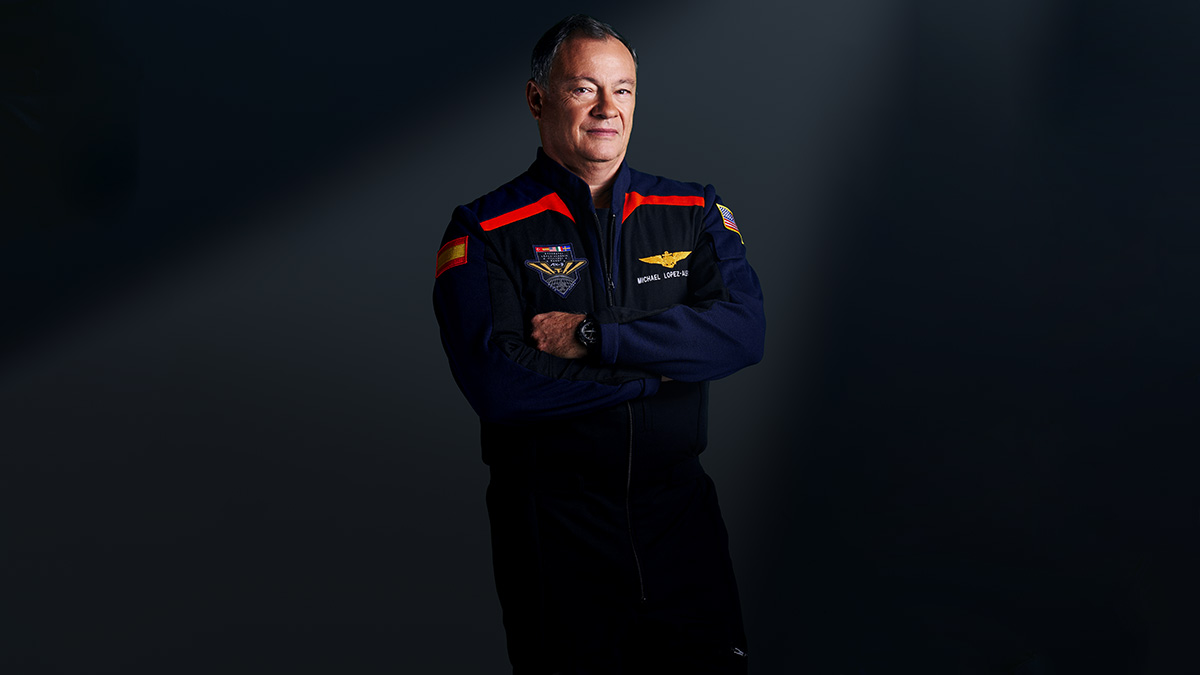'We are democratising access to ISS': Chief astronaut Michael López-Alegría, Axiom Space
 Michael López-Alegría | Axiom Space
Michael López-Alegría | Axiom Space
Exclusive Interview/ Michael López-Alegría, chief astronaut, Axiom Space
BORN IN SPAIN and raised in the US, Michael Lopez-Alegria is one of NASA’s most accomplished astronauts. A veteran of six space missions, he holds NASA records for the most spacewalks (10) and the longest cumulative EVA (extravehicular activity) time (67 hours, 40 minutes). Inducted into the US Astronaut Hall of Fame in 2020, he later commanded Axiom Mission 1 in 2022―the first private mission to the International Space Station―and Axiom Mission 3 thereafter. As Axiom builds a private space station, Lopez-Alegria’s expertise is proving vital. In an exclusive interview with THE WEEK, he reflects on his journey, lessons learned and Axiom’s vision for the future of space exploration. Excerpts:
Q. What are some of the key lessons from the ISS that Axiom is using as you prepare for an independent station?
A/ Axiom Station will take advantage of the dramatic evolution in the miniaturisation of electronics that will allow us to locate many of the large avionics assemblies mounted on the external truss of the ISS within the pressure shell (the main structural component). This will allow for much simpler maintenance without the need to perform a spacewalk. Advances in software processing speed will allow us to have a much smaller ground team to manage Axiom Station’s systems.
Q. Are there specific design or operational changes you are advocating for in Axiom’s modules?
A/ One of the biggest complications aboard the ISS is the myriad cables in the main passageways. Axiom Station is being designed to allow for the stowage of cables behind panels, keeping the corridors clear.
Q. How do you ensure continuity for critical experiments and long-duration research projects as the ISS transitions into a new era of private space stations?
A/ Axiom Station’s Payload Power Thermal Module plans to be berthed to the ISS for several months. We are talking to space agencies that operate many of the research facilities about moving them to PPTM, so as to preserve their functionality and save decades of research and equipment.
Q. How did you select and prioritise Axiom-4’s diverse scientific portfolios? And what outcomes do you hope to achieve for astronauts’ health and Earth-based applications from these studies?
A/ The portfolios for our human spaceflight missions come together based on multiple factors, including the scientific priorities of our customers, availability of resources to support the research and how much crew time is available to complete research activities. For the biological and human research taking place on Axiom-4, we are looking forward to testing medical equipment that could be used to support future diabetic astronauts (increasing future crew diversity), learning more about how the human body adapts to space, and testing cancer drugs in microgravity.
Q. What excites you the most about private space stations and the democratisation of access to space?
A/ I am encouraged by how Axiom Space has been able to open access to low-Earth orbit in general, and to the ISS in particular, to countries that previously had no or restricted access to it. The benefits to those nations start with advancing their national research priorities, include expanding activities in space and other technical areas and have perhaps the most impact on inspiring their youth to dream.
Q. The challenge of removing excess carbon dioxide has long been an issue on the ISS.
A/ Over 25 years of operation onboard ISS, we have learned an extensive amount about carbon dioxide control. A few years ago, ISS replaced CDRA (carbon dioxide removal assembly) with an improved 4BMS (4-bed molecular sieve system). Axiom Space has made significant improvements on this design, developing components to have longer life and be more easily replaced and repaired when they do break. Incorporating lessons learned from ISS equipment failures/malfunctions and building our air revitalisation and ECLS (environmental control and life support system) products with an eye towards future upgrades and ease of maintenance are our goals. With Axiom Space’s vertical integration and in-house design and manufacturing, we have optimum control over our space station hardware. We are designing these systems to be maintainable, upgradable and repairable on orbit with as little ground resupply as possible.
Q. Is there a particular experience from your time aboard ISS that fundamentally changed your perspective on Earth or humanity?
A/ Every moment brings a small but additive shift in perspective. The impact of the view of our planet from that vantage point cannot be overstated.
Q. Do you see any realistic pathway or interest in establishing scientific collaboration or data-sharing with the Chinese space station Tiangong?
A/ We are focused on supporting the United States and our allies forge the new low-Earth orbit economy. There may come a time when the US and China cooperate in space, but that is not the state of things today.
The Week